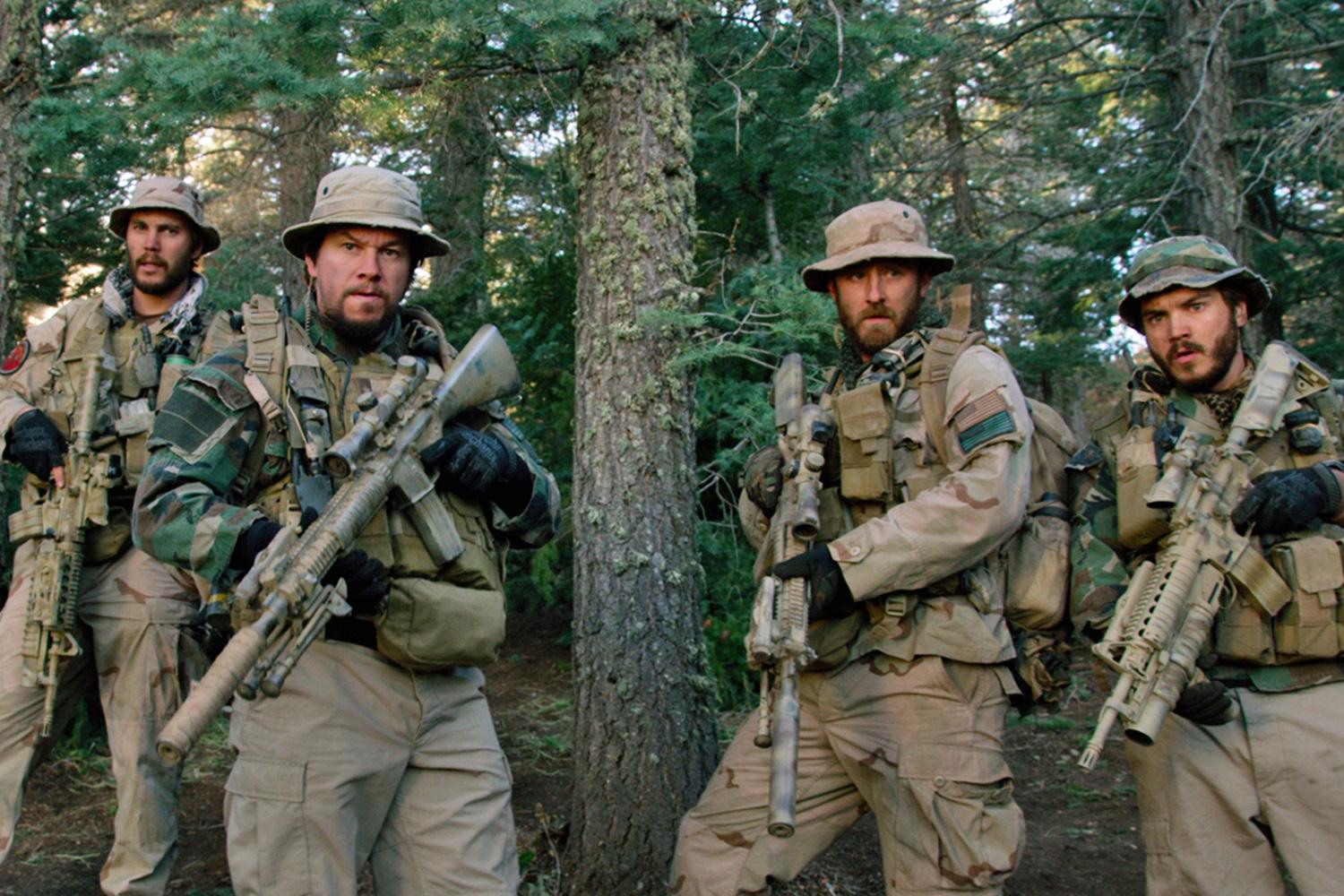“I’m not going to die for my country; I’m going to have lived for it,” proclaimed Matt Axelson (Ben Foster, “Ain’t Them Bodies Saints”), one of the four soldiers caught up in a desperate situation in Afghanistan in the film “Lone Survivor.” Based off the non-fiction book of the same name, this film tells the story of Operation Red Wings, a 2005 Navy SEAL team mission that left only one member alive. The four-man team was attempting to kill infamous Taliban leader Ahmad Shahd (Yousaf Azami, “Prisoners”), when they came across a triad of goat-herders that warned the Taliban of the soldiers’ approach.
This film may appear to be another typical war movie, but it proves to be much more than that. The acting is simply phenomenal, while the minutes ticking by leave the audience on the edge of their seats. Truly, no punches are pulled from this film. At one point, left with no other methods of escape, the men jump off a cliff and painfully crash their way through the shale and trees. With an interesting editing method of slowing down and speeding up their descent, it truly feels as if one might be experiencing the same fall.
The four main characters are a phenomenal group whose charisma crackles together on screen as they go from discussing colors for rooms in their houses in America to gripping each other tightly in the face of imminent death. Mark Wahlberg (“The Fighter”) is excellent as Marcus Luttrell, the leader of the campaign and author of the book inspiring this movie. His best acting is portrayed near the end as he is offered help from an unexpected person. Wahlberg responds by gripping a grenade as if it is his only friend, screaming that if he dies, everyone will. Foster as Axelson is another great presentation, with perfectly timed striking phrases like the one mentioned above. He manages to hold himself together through the power of words, which in turn seems to help his fellow comrades.
Michael Murphy is fantastically depicted by Taylor Kitsch (“Friday Night Lights”). Yet even more striking is the exactness to which director Peter Berg lends its characters—down to the 11 bullet wounds found in Murphy’s body. Lastly is Daniel Dietz (Emile Hirsch, “Rush”), who is the main operator of communications, which fails repeatedly among the harsh, mountainous terrain of Afghanistan. Both Dietz and Murphy lend bits of comedic reprieve which starkly contrast against the harshness of the film—Dietz is worried about his wife redesigning their house while Murphy tries to decide whether or not he would buy his wife a horse as a wedding present.
The soldiers are tested in a variety of ways throughout “Lone Survivor,” and a shocking twist at the end of the film is a stark reminder of the humanity of others. Throughout the gruesome violence that accompanies a war film, there are intermittent scenes of the love between comrades and the strength it takes to harness one’s fear. The film additionally stays close to the true story and does not condemn the people of Afghanistan as a whole, as sometimes can be seen in films like these. There is a vast contrast between the members of the Taliban and the people of the village who are kept in constant fear of death.
This film could definitely be considered one of the better war movies in recent years. Berg, the director, spent much time ensuring the validity of many different aspects of the film, in addition to working at a discounted wage; Wahlberg and Kitsch both also worked at discounted wages so that the film had enough money to be made. In a story of this magnitude of disaster, it can be easy to overlook the small pieces of humanity that hold a vast amount of importance, but “Lone Survivor” makes sure the soldiers are humanized, acting as they most likely had in real life. Other movies dealing with similar subject matter should take a lesson from this film: Both action and emotion have an equal place in the battle between life and death.











